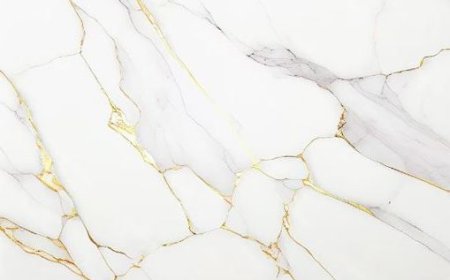The Importance of Office Table Design in Modern Workspaces
Office table design plays a crucial role in shaping the overall environment and productivity of any workspace. The way an office table is designed affects not only the aesthetics of the office but also the comfort and efficiency of employees. In todays fast-paced business world, where workspaces are evolving rapidly, choosing the right office table design is more important than ever. A well-thought-out design can encourage better posture, improve collaboration, and even boost creativity among team members. Whether you are outfitting a small home office or a large corporate setting, the office table design should balance style, function, and ergonomics to create an ideal work environment.
Modern office table designs go beyond mere functionality; they are about creating a space that supports health and wellbeing. Ergonomics is at the forefront of these designs, focusing on reducing strain and preventing injuries that can result from long hours of desk work. Adjustable desks that allow for both sitting and standing, curved edges to minimize pressure points, and integrated cable management systems are just a few features that modern office table designs offer. These innovations reflect an understanding of the evolving needs of todays workforce, who require adaptable and healthy work environments to maintain high productivity levels.
Key Features to Consider in Office Table Design
When selecting or designing an office table, there are several key features to consider to ensure it meets your specific needs. The size and shape of the table are fundamental because they determine how much workspace is available and how it fits within the office layout. Rectangular tables are the most common and versatile, while L-shaped or U-shaped tables offer more surface area and can help define work zones in larger spaces. Round or oval tables are great for meeting rooms and collaborative work areas as they facilitate conversation and equal participation.
Material choice is another critical aspect of office table design. Wood remains a classic and durable option, giving warmth and a professional look. However, glass and metal are increasingly popular for their modern and sleek appearances. These materials also influence the tables maintenance and durability. For example, glass surfaces are easy to clean but may show fingerprints and scratches more readily. Additionally, sustainability is becoming a significant factor, with many businesses seeking eco-friendly materials and manufacturing processes in their furniture choices.
Functionality features such as built-in storage, cable management, and power outlets are essential in todays tech-driven offices. Many office tables now come with integrated drawers, shelves, or compartments that keep essentials organized and within reach, reducing clutter and increasing efficiency. Cable management systems help keep electrical cords and device chargers tidy, which not only improves the aesthetics but also minimizes hazards. Power outlets embedded into the tabletop or its sides allow for easy charging of laptops, phones, and other devices, making these tables highly practical.
How Office Table Design Influences Productivity and Collaboration
The design of an office table significantly impacts how employees interact with their workspace and with each other. An open-plan office with large communal tables encourages collaboration and spontaneous brainstorming sessions, which are crucial in creative industries. Conversely, individual desks with privacy panels or partitions support focused, uninterrupted work, which is essential in tasks requiring deep concentration. Understanding the nature of work performed and the company culture will guide the appropriate office table design to foster the desired work dynamics.
Comfort is another factor directly linked to productivity. Tables designed with ergonomics in mind help prevent discomfort and repetitive strain injuries that can lead to absenteeism. Adjustable heights and ample legroom accommodate a variety of body types and work preferences, ensuring every employee can maintain a healthy posture. Additionally, aesthetic appeal should not be underestimated as it influences mood and motivation. A visually pleasing office table design contributes to a welcoming environment that employees look forward to spending time in.
In collaborative settings, modular office tables that can be easily rearranged are gaining popularity. These designs support flexible layouts that can be adapted for different meetings, projects, or team sizes. Such flexibility allows organizations to optimize their space usage and encourages a culture of cooperation and innovation. The ability to customize office table arrangements means that businesses can respond quickly to changing needs without incurring significant costs.
Trends in Office Table Design for 2025 and Beyond
As we move further into 2025, several trends are shaping the future of office table design. One prominent trend is the increased demand for sustainable and eco-friendly furniture. Companies are now more conscious about their environmental footprint, opting for tables made from recycled materials or sustainably sourced wood. This shift not only supports global sustainability efforts but also appeals to eco-conscious employees and clients.
Technology integration continues to be a driving force behind office table design innovation. Smart desks equipped with sensors that monitor posture, remind users to take breaks, or adjust height automatically are becoming more accessible. These features reflect a growing awareness of health and wellness in the workplace. Moreover, wireless charging pads built into the surface of office tables are reducing cable clutter and improving convenience.
The rise of remote and hybrid work models has influenced office table design as well. Many businesses are investing in multifunctional furniture that can serve both office and home environments. Compact designs that maximize limited space without sacrificing functionality are particularly popular. Additionally, aesthetic elements that create a sense of comfort and personalization, such as customizable finishes and integrated lighting, are gaining traction.
Choosing the Right Office Table Design for Your Needs
Selecting the perfect office table design requires careful consideration of your specific requirements, budget, and style preferences. Start by assessing the space available and the type of work that will be performed at the table. For example, creative professionals may prefer large, open surfaces for spreading out materials, while administrative roles might benefit from compact tables with storage. Think about whether the table needs to support technology-heavy tasks and if it will be shared among multiple users.
Consulting with a reputable supplier or designer can help you navigate the many options available and find a design that fits your unique situation. Consider testing different table heights and configurations to determine what feels most comfortable. It is also wise to prioritize durability and ease of maintenance, especially for high-use areas. A well-chosen office table design not only enhances productivity but also adds value to your workspace for years to come.
Final Thoughts
In conclusion, office table design is a critical element in creating efficient, comfortable, and inspiring work environments. From ergonomic features and material choices to technology integration and aesthetic appeal, every detail matters. By investing time and thought into selecting the right office table design, businesses can improve employee wellbeing, foster collaboration, and adapt to future workspace trends. For those looking to upgrade their office furniture, working with a trusted partner like the office furniture supplier Philippines ensures access to a wide range of innovative and quality office table designs tailored to meet diverse needs.




































![Play99 Login & Registration Guide for Indian Users [2025 Update]](https://www.atlantanewsplus.com/uploads/images/202507/image_140x98_6870c1df7bfcd.jpg)